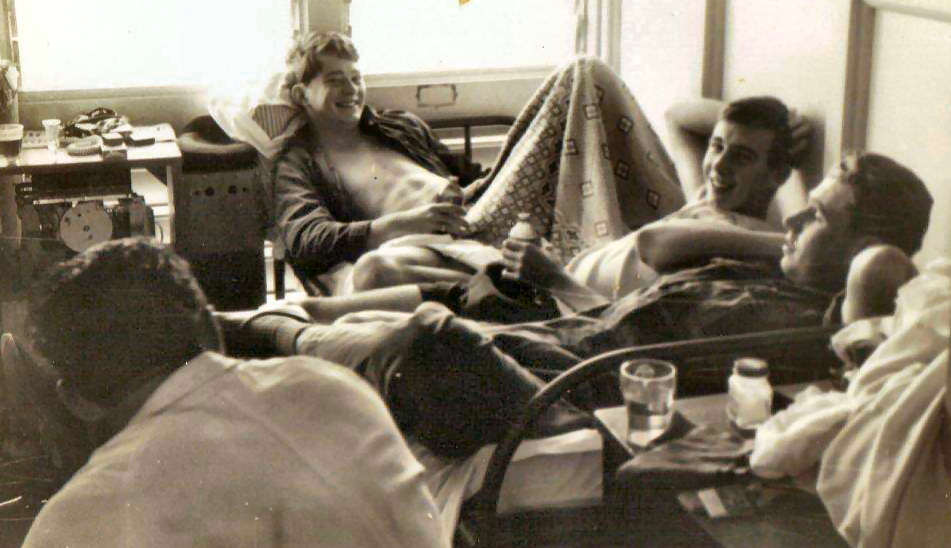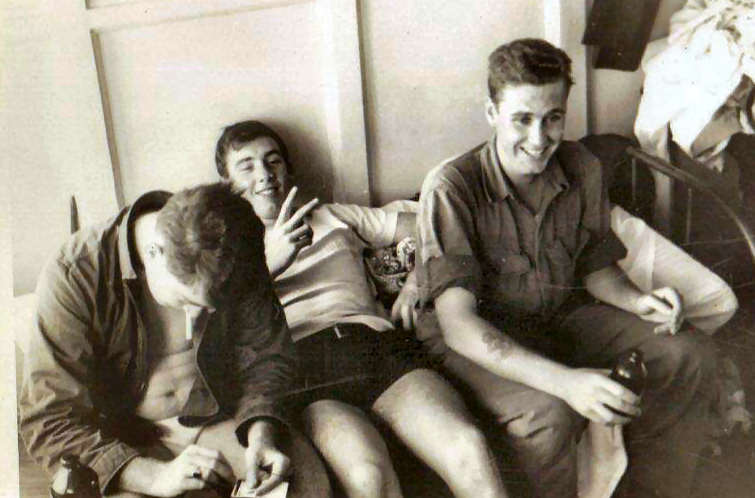|
Radschool Association Magazine - Vol 32 Page 19 |
|
|
Privacy Policy | Editorial Policy | Join the Association | List of Members | Contact us | Index | Links | Print this page |
|
|
Your Say! |
|
|
|
|
|
Adelaide, Australia Day.
(Apologies, Chris English sent us this and it should have been in our last issue, but it got “lost” when the trusty Toshiba dropped dead. tb)
|
|
|
|
|
|
Seen in the photo debating the finer points of the 6AQ5 output valve in two genuine Radschool superhet receivers are from L to R:
Alan Keam, Chris Kennedy, Alistair (Butch) Craill, Trev Byrne, Kev Simonsen (Vic), Dave Bowden, Carl Benson and Chris English.
|
|
|
For over 20 years a group of SA based ex Radschool trainees have
gathered on the Australia day weekend to renew acquaintances and
talk about old times. While always a casual event it has
nevertheless seen old mates come from as far away as Darwin, Sydney
and Melbourne to enjoy a relaxing family day with a barbie, be
The 2010 event was hosted by Carl and Wendy Benson of Adelaide at their shack on the banks of the Murray River.
When and how these two Radschool super-hets were honourably "discharged" from Radschool and how they ended up on display on the banks of the Murray some 35 years after their creation are possibly questions best left un-asked!
Click the pic for a bigger nostalgic view.
PS:
Re the two superhets shown
above, are they still in existence and the one sitting bottom down
does it have a perspex cover on the bottom? If this is the
case I built one of these as a demo model with the brackets the same
for the Fsgt who had us for that section of the course. The reason
that I was asked to do it was I was an ex PMG tech and had been into
playing around with radio's for some time and was handy with a
soldering iron then.
Can you help Chris??
|
|
|
Reg Wood wrote, he says: In the pictures of the hut 29 boys in Vol 31 on page 14 the one 11th from top of page, the person in the middle of the back row, has to be Russ Osborne, I would know that far away look he got when he was 3 sheets to the wind from when we were on Radmechs together in 1965, God rest his soul.
He ended up on Ground and I on Air.
|
|
|
|
|
|
I've just come out of the take-away with a meat and potato pie with mushy peas, large chips and a jumbo pork sausage. A poor homeless man sat there and said, 'I've not eaten for two days.' I said to him, 'Geez - I wish I had your will power.' |
|
|
|
|
|
TX/RX TR 5043.
The photos of the old TX/RX TR5043 radio we had in our last issue brought back a bunch of memories for a lot of people – we received the following:
Kev Carroll had the crystal ball out when he wrote, With reference to the 'VHF' set on page 12, I am sure that you will get many responses (did we what?? – tb), it appears to be a '5043' US manufactured 4 channel VHF with ratchet motor tuning. The 5043 was installed in a number of RAAF aircraft, including the Mustang - immediately behind the pilot’s head and in the Wirraway, located behind the rear seat and accessed via a panel in the side of the fuselage. The tuning was based upon large crystals - approx 45 x 45 x 10mm, one per channel. The unit was powered by a 'dynamotor', which in the case of the Mustang, was located under the pilot's seat, necessitating a 'headstand' by the Tech, just to change the fuse!!
The 5043 was the first operational radio I worked on at East Sale,
and, as I recall, I was ably tutored by Ken Bristostag!!
The specs are:
TR 5043 VHF Radio was commonly known as the SCR-522.
The SCR-522 was a voice only, VHF transmitter/receiver operating in the 100 to 156 Mc bands with a power input of 8 to 9 watts. It was a re-design of the British TR 1133 VHF set in order that it could be manufactured with American tooling. Operation was provided on any one of four crystal controlled channels. Integrally mounted in a common case, was the BC624A VHF receiver and the BC 625A VHF transmitter. The rest of the system consisted of 28 VDC input dynamotor (PE-94-A) and various jack and junction boxes. Input power consumption was 311 watts. Transmitter channel 'D' had the ability to be used in 'pipsqueak' mode. Pipsqueak was a homing or DF tone sent from the aircraft to a ground station so the ground station could take bearings on the aircraft. It was useful either for normal DF work or when the aircraft was in trouble and the pilot did not want to stay around to transmit.
Regards Kev
Mike Ramsey wrote, The full name of that transceiver was TR5043 and the air types amongst your readers will also tell you they were actually used in Spitfires and Lancasters as well as the Dak (probably other British aircraft of that late 50's through to 70's as well) but my contact with them was in the Edinburgh and Woomera control towers where they were the emergency VHF comms. My Defence work still has me in Woomera regularly and a couple of years ago I took a trip over the old control tower - there were several TR5043 boxes left derelict in the old Radio Control Room and I remember also seeing them at Edinburgh, the Evetts Field tower and at Giles - many moons ago.
Paul Ereaut wrote, Howdy, you have made me feel a very old man by asking for the identification of the TR5043 Transmitter Receiver. This was the standard VHF set in almost every Dakota up to at least the sixties and was also used in the Lincoln, Mustang, Wirraway and almost certainly other WW2 aircraft which I never got to work on. I was on 3 Apprentice course at Frognall (one of the greybeards), but I am amazed that knowledge of this set has been forgotten so quickly by you 'young' guys. There will almost certainly be a flood of replies to your request (You’re damn right about that mate – tb) because I am sure that those of my vintage will be just as amazed at this request. Cheers Paul.
|
|
|
Mick Ryan, ex 24 Appies wrote: Ah Yes!! looks like a close
facsimile of a TR5043Q VHF Transceiver and as
They were replaced circa 1975 with Collins/Rockwell VHF-20's (above).
Gees the things you remember!!
|
|
|
A fat young bloke served me in McDonalds at lunch time. He said 'Sorry about the wait'. I replied 'Don't worry porky, you'll lose it eventually '
|
|
|
|
|
|
|
|
|
Barry Morris wrote: Reference the unknown VHF set, I was a RadTech G at 1CARU from 1961 and for several postings. If I recall correctly we had one of these transceivers hidden in a back corner of the Ops room. It was a back-up for a back-up. In the event of a power failure and we lost our comms with aircraft under our control. One of the Operators would find the microphone and continue talking to the aircraft. This assumed that the battery pack had been charged. I had been told by my WO that the transceiver was the type installed in Spitfire aircraft during WW11. WO's knew everything. Tuning was not easy; a Swiss trained watchmaker may have enjoyed the task. This involved aligning a series of gears and then clamping them together. Hope this helps.
Terry Walters wrote Re: VHF radio? This VHF Transceiver (100 to 156 MHz) is known in Australia as the TR5043 (SCR-522 by the Americans) and was used in RAAF fighter aircraft in the Darwin area during WWII. After WWII it was used in various Ground configurations by the RAAF. eg, Emergency Comms in Air Traffic Control Towers, Comms in some Mobile Air Traffic Control Vehicles (MATCVs), etc. The RAAF also developed a mains powered VHF Receiver, called a Rack 15, which used just the Rx part of the 5043.
Mike Ramsey wrote: The pic is (I think) of a 5043 transceiver of the kind used in the 60's and 70's as emergency VHF transceivers in control towers - as a RadTechG I saw plenty of these and the Rack 15 receiver (only the receiver part) but my memory dims as to the exact name. I believe they were also used in the old DC3's too but you will need confirmation from someone from "the other side (RadTechA) to answer that.
Ian Johnston wrote: The question on where this radio was used, it’s the SCR-522,4 channel VHF set used extensively by all allied air forces during WW11 and in Korea on a wide variety of aircraft, the Brits had an equivalent model TR1143 (TR 5043), even the Russians made a version of this and when I was at ARDU Laverton in 1960 it was used in the DC3, also the Wirraway and I think the Lincoln also had it. It was also used in RAAF control towers as a standby set. It was a dog of a thing to align. A lot of these units were modified for Amateur Radio use when they went to disposal.
John Griffiths, who must be as old as the hills because he was on 4 Course, says: The VHF is an SCR 522 or the RAF designation TR5043 I think it was a 4 channel crystal controlled VHF transmitter receiver and was used in almost anything that flew before 1953 – but not in Canberras, Sabres or C130s. It was also used extensively with a 240 volt power supply in Control Towers and mobile control posts. I know where there are several examples including one alleged to have been in an aircraft. I worked extensively on it in 1954, in various aircraft and in the Dakota with the PINK toilet seat for HRH QEII. Of course it was before the time of you new boys from Laverton. (Smile). Regards.
Ian Champion says: The radio on Page 12 looks like it could be a 5043. I came across them in the '70s while working in the Tower Richmond. I also saw them at East Sale when I was on attachment and they were probably at most, if not all, ATC Towers at the time. They were used as Emergency VHF transceivers for if/when the GRR803s failed. The story I was told is that they were originally used in Spitfires in WW2. Maybe one of the older Aireys will be able to confirm that. They were a 4 channel transceiver with a mechanical tuning mechanism that ground and clunked its way between channels. It used to scare the crap out of us when we were working in the RER if an Air Trafficky decided to change channels. I always found it amazing that they were an Airborne piece of kit because we used to take them back to radio workshops for maintenance and by the time we'd made the short Combi trip back to the tower they bounced out of alignment and needed tweaking again once they were installed.
|
|
|
Paddy is walking down the road eating a bag of doughnuts. Murphy meets him and says 'If I can guess how many doughnuts you have in the bag, can I have one? Paddy said 'If you can guess how many doughnuts are in there you can have both of them'. Murphy shouts 'Four!'
|
|
|
|
|
|
|
|
|
Jim Lander says: Hi. I remember this piece of antiquity. When I was at Sale in 1962/63 as a Radmech, this equipment was fitted to the Dakotas used by trainee navs and signallers (AEO’s). I cannot remember its correct title, but remember it fitted right down the rear of the Dak. It was easy to work on and was fairly reliable. Some old groundies will remember it too, as it was used by them also, but it looked different as it was split into two RX and TX units.
Sorry to hear about Herb Curry, we joined the same day in Townsville and I had lost track of him. Keep up the good work with the magazine. Regards.
Keith Dudman
wrote, “With reference to your article on the mystery VHF Set, which
you referred to in Vol 31, Page 12. I know it well. It was a SCR 522
which was primarily used in P51D aircraft. We used to have one as a
static test bed when I was attached to the radio section prior to
discharge at Amberley in the early 60's.
It was in a big black box which consisted of two sections at the bottom of the box. One was the Receiver and the other was the Transmitter. On top of that lay a tray which housed mechanical slides actuated by a solenoid that changed the four VHF channels in unison with both the receiver and transmitter. All were connected to a remote control unit with four red push buttons.
I have found a better description of the unit on the internet which follows.
Older ex-service radiomen and collectors of military radio equipment will know of the English TR-1143 VHF aircraft transceiver, which was adapted by the US military as the SCR-522 and then became the TR-5043, used extensively by the allies in the latter stages of WW2 and up to the 1950's, in Spitfires, Mustangs and other aircraft of that vintage. After the war many amateurs modified the sets for 2 meters and it provided a cheap entry to that amateur radio band.
The TR-5043/SCR-522 was a 4 channel crystal controlled, amplitude
modulated transmitter and receiver,
I hope this will answer your query Kind regards Keith Dudman
Kevin Cragg writes, re the radio in Volume: 31, Page: 12, I'm pretty sure the VHF radio set is a TR5043 out of a spitfire or Hurricane. I'm pretty sure we used a similar set as a battery powered transceiver in Richmond Tower in 1975. I remember the label on it said "refurbished by 1AD 1959!" I found a pic of it on the net HERE.
|
|
|
I have a new chat up line that works every time! It doesn't matter how gorgeous or out of my league a woman might be, this line is a winner and I always end up with them . . . here's how it goes: 'Excuse me love, could I ask your opinion? Does this damp cloth smell like chloroform to you?'
|
|
|
|
|
|
|
|
|
Dianne Hoopert, (Seidman)
wrote, “I have read through past issues of the RAM and I do applaud
you for your timeless effort. If it wasn't for you and people like
you, so many things would be diminished.
My story is nowhere near as exciting or full of pranks and adventure like others have donated.
I started my Air Force life in May 1968 - Feb 1973. I came in as TRINOP, (Teleprinter Operator WRAAF - tb) later to become a COMMSOP (Communications Officer - tb) , and now in the Reserve as a CISCON (Amalgamated COMMSOPS and EDT Operator – tb).
My, how the Communications world has changed.
I went from Radschool to 27COMMCEN, Vic Barracks, Melbourne - my only posting. I loved my job even though it was put to the test on more than one occasion. That great shift system we had, just terrible with quick changeovers from Doggo to Evening Shift. You know, finishing second doggo at 0800 and starting evening shift at 1500. Whoever came up with that one - well, enough said on that matter.
I met and worked with some great people. Nothing like your shift partner turning up for evening shift rather intoxicated, packing him into a spare room to sleep it off and getting rid of him before the day shift started. As an LACW I was torn between what I should do, but didn't do. As it turned out, I woke up very ill that very day. Went to medical (doctor was going to hospitalise me). I said it was too late for someone to takeover my shift. He gave me medication - I went to work and then I was the one locked away for the night. Just goes to show, sometimes 2 wrongs do make a right.
Sometimes, the only entertainment was to chase a mouse or two around the Commcen. Classic watching Mick Paget chasing this little thing, it doubling back and ending up under Mick's shoe - CRUNCH!!!! I do believe the mouse became a gift to our 'leaders'. It was taped under the desk but wasn't discovered until it began to smell. SURPRISE!!
Eventually, I got married and was able to stay in the Air Force.
After a couple of years, my husband was posted to Townsville, but
not me. Co-location was just not heard of in those days but I have
to give credit where credit is due. The 'leaders' did what they
could to get me to Townsville but as Townsville Comcenwas an all
male Commcen, they just would not accept me. After another couple of
attempts to relocate me, and failure prevailed - I decided to
discharge.
Several years later I joined the Reserves and haven't looked back. As much as I enjoyed being in the PAF, I learnt other things and did more as a Reservist. 21SQN was my first Reserve Unit but I was also fortunate enough to go into 27SQN. There I did some really terrific stuff there under the guidance of the good WOFF and FSGT. We set up Rebro's for COMSURV (Combat Survival – tb), did Radio training for the cadets and, members of the SQN. Went to Mareeba and Macrossan for more training adventures. Even went out with the Army on a couple of their training weekends. It was all good. I then came back to 21SQN where my training at 27SQN came in quite handy, plus, I was fortunate enough to wear a few other 'hats'.
Life in the Reserves took a change and we all received our WE postings. I now come under of the wing of 321ECSS (Expeditionary Combat Support Squadron), Darwin where I am now on CFTS (Continuous full time service – tb) until mid September 10. I have been here since mid Jan 10. It has its challenges but at the same time, is most rewarding.
Yes, life in the Air Force is good.
Cheers, Di
|
|
|
Maree Fitzgerald wrote, “Hello, I don’t have a RAAF background but was “going steady” for two years with an airman and having grown up just down the road from Laverton and Point Cook, I do have a few friends and family members who have “married into the Air Force”.
Have not long “discovered” your Association and extremely interesting magazine, better late than never and hey, we are all aging here, I noticed in Volume 2, dated 31st August, 1999 there is a photo which had been sent to you by Bill Langton of 9RMT. I am able to fill you in on the first names of two of the Radschool boys. Up the back row, almost centre stage, is John Leonard Brereton. Front row, extreme right is Ron Oddy. Ron was married to Anne who gave birth to a baby boy while they were based and living in the backblocks of Laverton. Poor baby is probably an “old man” of over forty years of age by now. John remustered not too long after April 1967 as he wished to study electronics. Sadly, I have since discovered on the internet that he passed away in July, 2007 but have not been able to elicit any further details of his demise.
John visited my family in Kingsville for approximately two years after this, 1967 to 1969, and used to “car pool” from interstate to visit. There may be somebody from either Wagga Wagga, Edinburgh or Richmond who may remember him.
I would like to hear any news of the Oddy family as I am unable to find any references to any of the above mentioned in your magazines.
Another story which I found very amusing was about the man who parked his Datsun SSS in the CO’s pond. (We do too Maree, and we know who it was……..tb)
Joy Hutchinson wrote: Howdy, My name is Joy Hutchinson (used to be Joy McCauley, Switch Operator in the WRAAF 1952-56, Laverton, Point Cook, Mallala-Lapstone). I really enjoy reading all these articles, the girls in your pictures are after my time as I joined at the time of Korea. In those times there were not that many and the Telegraphers and Radio Operators and Switch did get to know one another. I belong to the RAAF Association Coffs Harbour and live at Valla Beach. Also have a couple of WAAF and WRAAF ladies in our Ex Service Women's group in Nambucca Heads so will pass some of your info onto them. Enclosed are a couple of our photos but not sure is there are too many still around, one never knows though does one.
|
|
|
|
|
|
|
|
|
|
|
|
|
|
|
|
|
|
|
|
|
|
|
|
|
|
|
I was having great sex today and just as we got towards the climax my wife completely ruined the moment and said those words that just fills a man’s heart with fear dread and panic.... "Hi Honey I’m home".
|
|
|
Bill Eccles wrote: Only "enlisted" to the magazine recently, but am enjoying browsing thru the archives. I was on 18 Course RadTech apprentices (joining 1964) and have found 7 of my course mates on the membership list. I hope I get time to contact them (via the magazine I presume). Keep up the good work. Regards,
That’s what we’re here for Bill – tb
Greg McMahon writes: Can anyone tell me whether it was RadTech A’s or RadTech G’ that were attached to KL from Butterworth during the 1970's?
Mark Fielding writes: “I seek to jolt a few fading memories in regard to the call-signs used during our time in Vietnam. In particular I wish to know the call-sign and frequency used for the general arty and air strike warnings, the 9 Squadron controlling call-sign which I suspect was 'Dingo' and a call-sign for us to get in touch with fellas back at ops at Vung Tau. Any help would be gratefully appreciated cos my memory and diaries are fading!” If you know, please email Mark HERE
David Stewart writes: Please, I need assistance with a lot of dates, times and names. I am making a claim on the DVA but need some help with events. Is there a Squadron Log of events that I can refer to? I was an LAC Instrument Fitter cross trained in Electrical and Radio and spent several weeks staying at Nui Dat RAAF Hut. Would this be recorded any where? Would my Vung Tau duty crew rosters be recorded? My memory of events is very hazy. I used to go for a lot of "joy flights" and was involved in test flights and helicopter recovery.
1. In particular I was on a test flight that went
from Vung Tau, Nui Dat, a Fire support base North of
2. A night forced landing at Luscombe airstrip when an ash tray became entangled with the rudder pedals. I am pretty sure the pilots were Rags Redman and Crowdy.
3. An auto rotation caused by the fuel being turned of by Crowdy (with his umbrella) when Redman was flying and his response was a bit slow and a reasonably heavy landing occurred.
4. I was also involved in the recovery of Betts helicopter. I did not take my camera on this day but on this occasion I took my SLR.
5. Record of events when Peter Sherif accidentally killed himself. I was involved in another bushranger recovery from where and when I have no clue. I also was involved in several other helicopter recoveries. Also there was a picture taken by me from the back of the chopper with us approaching to land (smoke was visible) to pick up army personal. I cannot remember what occurred but I have a bad re-occurring dream of holding an injured soldier in the back of the chopper. That is all I remember.
This occurred after my R&C in November 70 as I had purchased my camera in Penang. The date when the hand grenades were thrown over the fence at Vung Tau. I remember that we were watching the movie Funny Girl with Barbara Streisand and Omar Sherif when the screen lit up. The date of the morning rocket attack at the end of the Vung Tau airfield, the time was after the helicopters had departed for Nui Dat. This occurred early in my tour as I was accused of sleeping through the attack in the instrument section and nicknamed Sandbag from there on. I was on duty Crew at the time. I assumed that the bangs I heard was the Caribou starting up outside and was just backfiring.
Any information would be gratefully accepted or access to a squadron log. I retired early from work as an Electrical Engineer from Bluescope Steel as I found it more difficult in coping with the stress of the job. I was on call 24 hours a day for Automation Problems / Breakdowns on the Hot Strip Mill at Western Port Vic. I am lodging my claim through the Southern Peninsula Veterans centre at Rosebud. Robin Date is my welfare officer.
If you can assist please correspond directly with David via email HERE or you can call him on Mobile 0438 870 194 or Home (03) 5986 3882
|
|
|
Kevin Leslie wrote, he says: “I have been asked by a friend to seek out the availability of a genuine item of WW2 Communications equipment which could be mounted in an old jeep. If any of our members are able to assist I would be pleased to hear from them. (If you can help, let us know and we’ll pass on the info to Kevin – tb)
|
|
|
Technology is dominated by those who manage what they do not understand.
|
|
|
|
|
|
|
|
|
We heard from John Laming, he writes, Re Volume 31, Page11. Thank you very much indeed for mentioning my book, Tall Tails of The South Pacific. (Pleasure John, it was a very good read – tb)
I saw the photo of the long nose Lincoln sitting on the ground at
Amberley. When Lincolns were grounded for good, due to main spar
corrosion, they were mostly cut up or used for fire practice.
So the picture you published was more like a Mk 31 that was dumped and was awaiting the wrecker and it would not have suffered radio active contamination.
So there you go Kev – you can rest easy……tb.
Karen McDonnell is looking for anyone who knew her father, Glen Trevor who was a Tels Op in Darwin around 1970 to 1974. If you can help, please email Karen HERE
Barry Flowers wrote: “Just wanted to say what a great story Ernie Gimm's was. I did a search on the name Des Gimm as I saw his funeral notice in the paper last week and thought Ernie would be related for sure after seeing the info on Amiens and Stanthorpe. I remember Des originally when I was only 3 or 4 when my Dad (Fred) had an orchard over the road from John and Ivy Gimm's place at Amiens, back in 1954 -1957 roughly. I then caught up with John in 1975 when I was transferred to Stanthorpe SS for a couple of years and clearly remember him as a man who loved to laugh. Thanks again for your story Ernie”.
(You’re right Barry, we have received a lot of correspondence re Ernie’s story – a lot of people loved it – tb)
Jim Cooney writes, “As a member of 3Telu and at Radschool Ballarat in 1953, serving at Pearce 1953 and Labuan 1955, am I still tied into the secrecy act? I have been out of touch with Djinnang assn for a while now and have lost the connection. Can you advise?? many thanks.”
Done! - tb
Grant “Robbo” Robertson writes: Hey guys, keep up the good work. Just like to say that a heap of Commsops, Techs, Edpops, Ciscons etc are hitting Facebook. There are two pages set up at the moment for contacts, one is called "EX COMMSOPS RAAF", and has 78 members, the other is "I Served (Am Serving) as an EDPOP/CISCON in the RAAF" and has 127 members. If anyone who uses the internet, registers with Facebook, they can go to these pages and become 'Fans'. Then they can access all the info and members etc. to see if there is anyone there they know, kinda like the Djinnang Association and RAAF Radschool Association. The ability to stick photos, info, events on the page makes contacting a heap of people really easy. Maybe the RAAF Radschool Association should put up a page, and then we can become 'Fans' of all pages with the added benefit that when something is put up on a particular page, you can get an update on your own page. one entry, many points reached/updated. Just a thought.
Jan Herivel wrote, he says in reference to Vol 31. Page: 19, the first female RADTECH was Nerida Benson who started her training sometime in 1975. She was certainly in residence in August 1975 when Peter started his Telsop Course at RADS. Cheers.
John Morley had sent us a few photos which we had in our last issue Volume: 31, Page: 14 and which John thought were taken around 1967/68. Unfortunately, John couldn’t put a name to any faces but Kevin Cragg saw the pics and he says: Hi, I recognise a young Reg Taylor, on the right in the 4th and 5th pictures from the top (hands behind his head and RAAF tattoo on his arm). Reg was an ex 5ACS plant op who remustered to RadTechG. Reg was a Sgt at Richmond when I was just out of Radschool 1975-1979.
|
|
|
|
|
|
SO!!! We’ve got 1 name – anyone know any more????
|
|
|
The Sqn was away on detachment and the loady and one of the pilots shared one of the tents. When they hit the sack for the night, the loady said: "Sir, look up into the sky and tell me what you see." The pilot said "I see millions of stars." Loady: "And what does that tell you, sir?" Pilot: “Astronomically, it tells me that there are millions of galaxies and potentially billions of planets. Theologically, it tells me that God is great and that we are small and insignificant. Meteorologically, it tells me that we will have a beautiful day tomorrow. What does it tell you?" Loady: "Well sir, it tells me that some bastard stole our tent." |
|
|
|
|
Back Go to page: 1 2 3 4 5 6 7 8 9 10 11 12 13 14 15 16 17 18 19 20 Forward
|
|
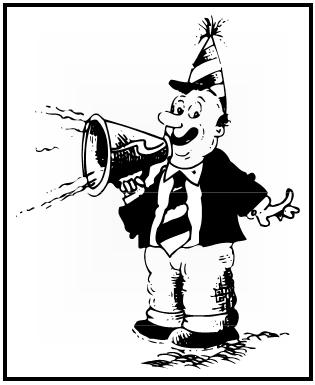

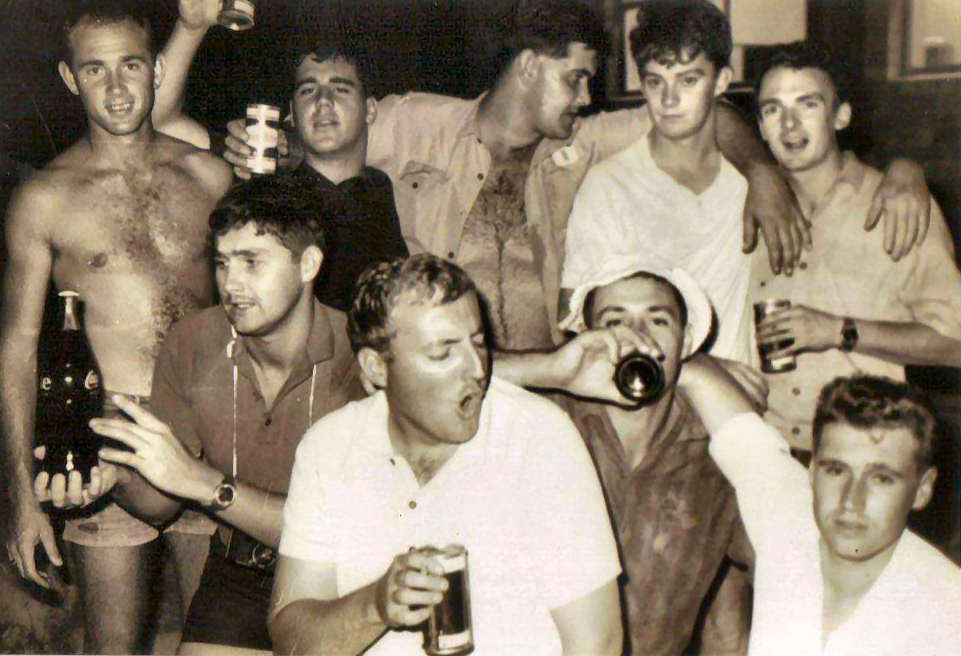

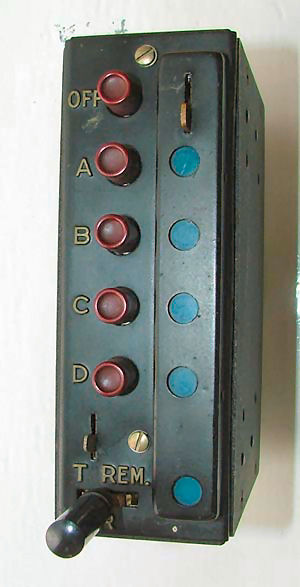 a
young Groundie in 72 was told they were used in Kittyhawks. The
Groundie world used them
a
young Groundie in 72 was told they were used in Kittyhawks. The
Groundie world used them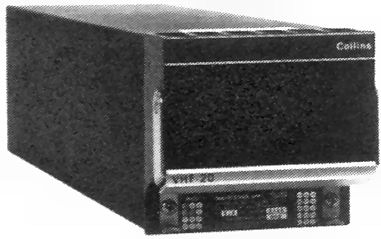 in Control Towers right up until mid 70's as the VHF Emergency
Transceiver. I remember tuning the Transmitter consisted of
unlocking the wing nut slides and tune for max brightness on the
globe and resistors making up a dummy load in the Antenna connector.
They had a push button channel selector (A-D) and used to rattle a
lot when changing channels but were best left on the one channel.
in Control Towers right up until mid 70's as the VHF Emergency
Transceiver. I remember tuning the Transmitter consisted of
unlocking the wing nut slides and tune for max brightness on the
globe and resistors making up a dummy load in the Antenna connector.
They had a push button channel selector (A-D) and used to rattle a
lot when changing channels but were best left on the one channel.
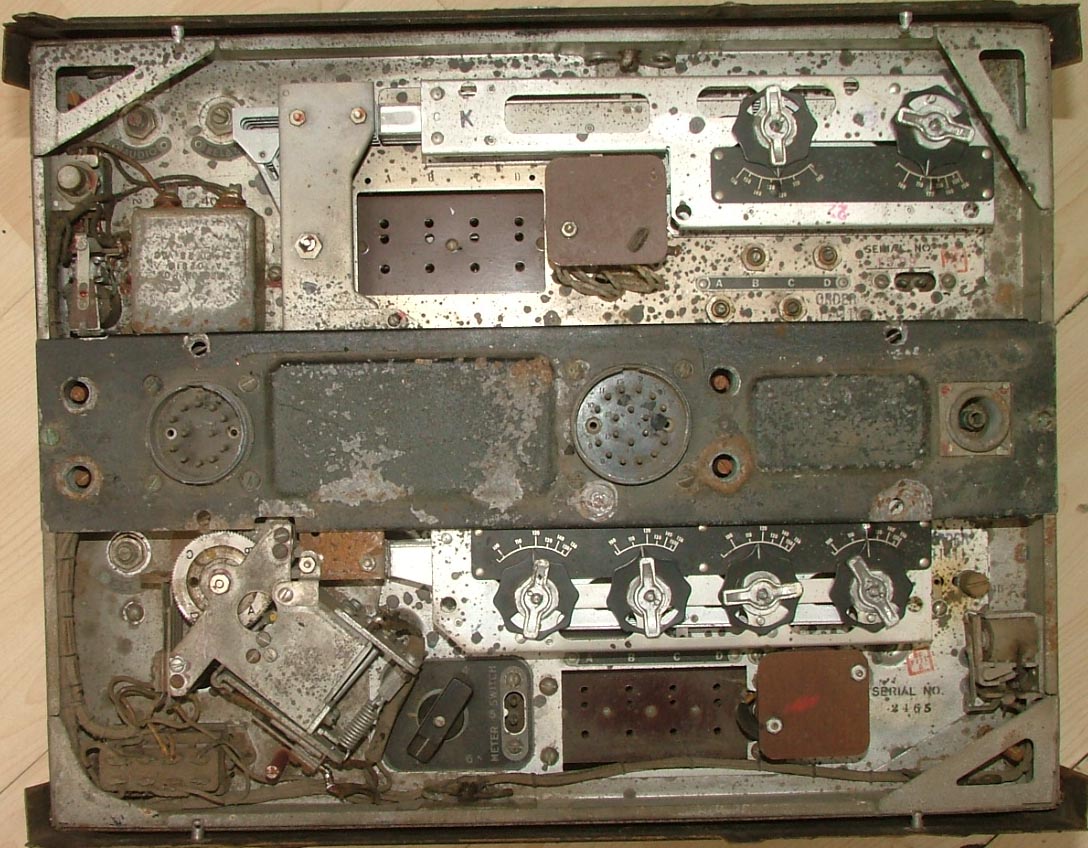
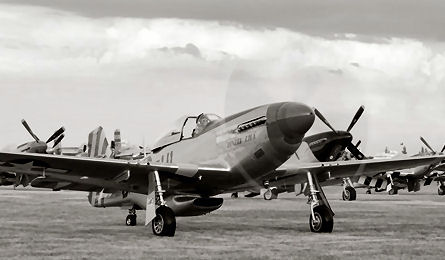
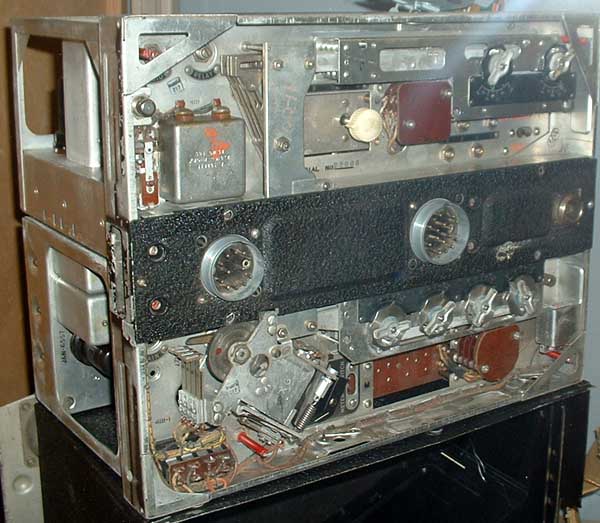 covering the 100-156 KHz range and operated remotely via a 4 button
switch (BC-602). The power output was less than 10 watts (from 320
watts input!). The transmitter (BC-624) and receiver (BC-625) were
separate units which fitted side-by-side into a metal case (CS-80),
whilst the channel change and tuning actuator mechanism was in the
form of a small rack mount (FT-144) and fitted into the case on top
of the two units. The channel change mechanism was electromechanical
with a uni-selector relay that selected the required crystals and
moved four pre-set metal slides to retune the receiver input and
transmitter output circuits. The transmitter has four tuned circuits
whilst the receiver has two. Before each mission the correct
crystals were fitted and the set was pre-tuned for each channel. The
separate power supply (PE-94A) was a very heavy (19 Kg) genemotor in
a metal case with filters etc. Most sets had a 28 volt input,
although 14 volt versions were made.
covering the 100-156 KHz range and operated remotely via a 4 button
switch (BC-602). The power output was less than 10 watts (from 320
watts input!). The transmitter (BC-624) and receiver (BC-625) were
separate units which fitted side-by-side into a metal case (CS-80),
whilst the channel change and tuning actuator mechanism was in the
form of a small rack mount (FT-144) and fitted into the case on top
of the two units. The channel change mechanism was electromechanical
with a uni-selector relay that selected the required crystals and
moved four pre-set metal slides to retune the receiver input and
transmitter output circuits. The transmitter has four tuned circuits
whilst the receiver has two. Before each mission the correct
crystals were fitted and the set was pre-tuned for each channel. The
separate power supply (PE-94A) was a very heavy (19 Kg) genemotor in
a metal case with filters etc. Most sets had a 28 volt input,
although 14 volt versions were made.

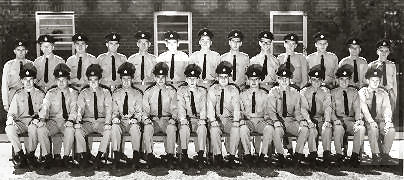
.jpg)
.jpg)
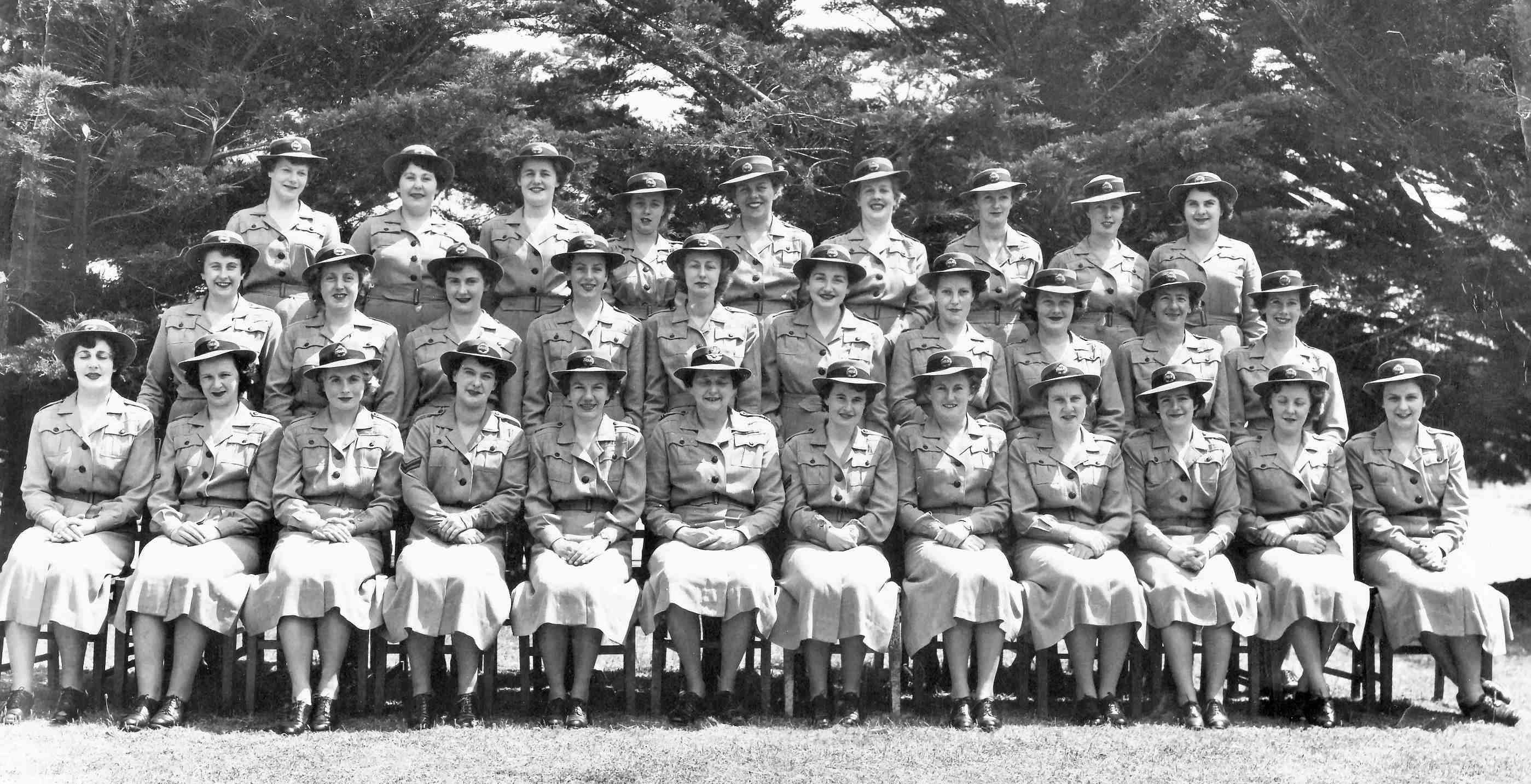
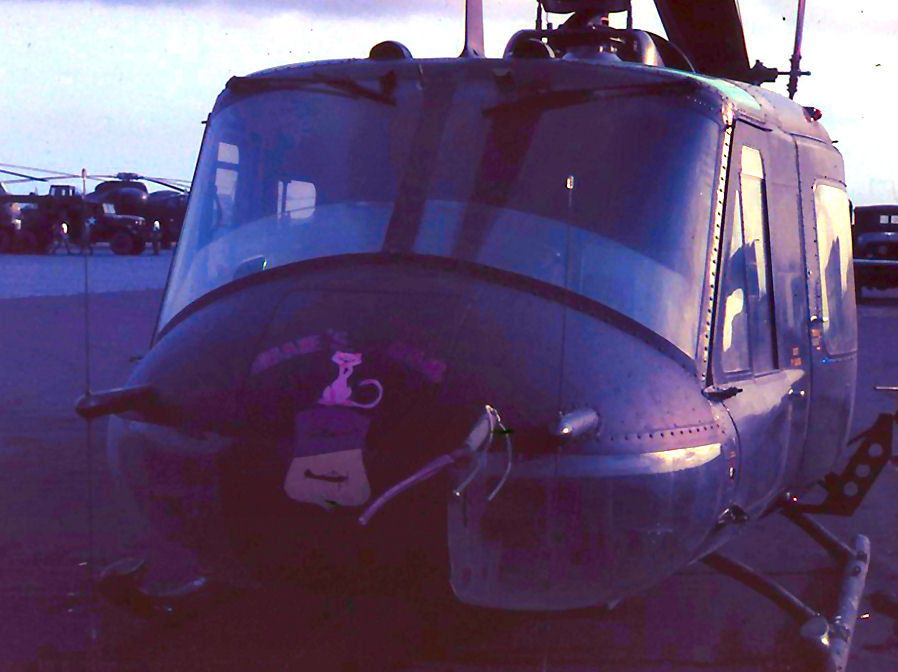 Long Bin (delivery of written instructions) back to Vung Tau. The
engine failed in the helicopter on return to Vung Tau and we landed
very heavily, the skids were severely damaged. The heavy landing was
beside the hanger. I can't remember who the pilot was. He deemed
that there was something strange about the engine (On the Test
Flight the engine was functioning too well at altitude. No power
drop off)
Long Bin (delivery of written instructions) back to Vung Tau. The
engine failed in the helicopter on return to Vung Tau and we landed
very heavily, the skids were severely damaged. The heavy landing was
beside the hanger. I can't remember who the pilot was. He deemed
that there was something strange about the engine (On the Test
Flight the engine was functioning too well at altitude. No power
drop off) 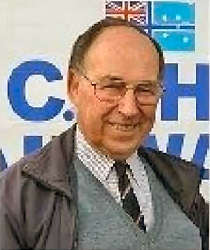
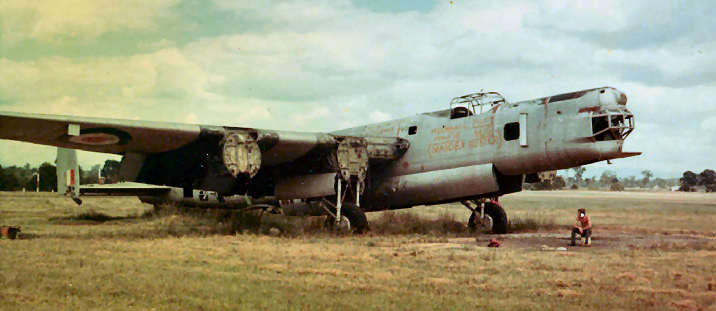 The
Lincolns that flew through or near the atomic bomb tests in South
Australia were the bomber (short nose) Mk 30 version, not the Long
Nose.
The
Lincolns that flew through or near the atomic bomb tests in South
Australia were the bomber (short nose) Mk 30 version, not the Long
Nose. 